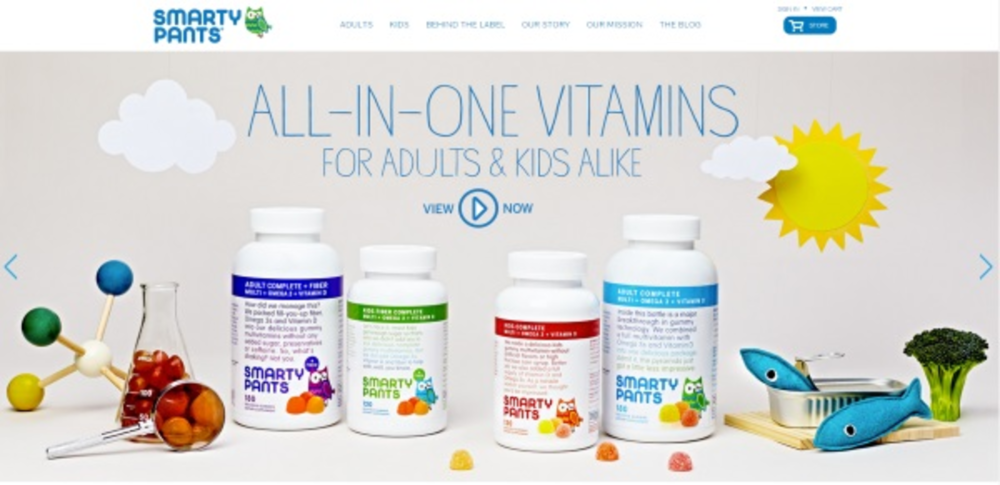Concern about personal health is on the rise.
And it’s this global, health-consciousness trend that’s fueling a growing market for vitamins. In fact, market research group Global Industry Analysts, Inc. projects that by 2020 worldwide demand for vitamins will reach $9.3 billion.
The market for vitamins, however, is crowded.
Flat out, it’s becoming harder to stand out and more difficult to carve out a specific customer base—besides those with a general interest in health. “Initially we had some instinct of who our customer was, but it was all sort of gleaned anecdotally, through sampling in stores; and none of it was gathered in a scientific or rigorous way,” says Clay Nichols, VP of brand for SmartyPants Vitamins, which sells its gummies in stores ranging from niche health food grocers to mass-market retailers, including CVS Pharmacy, Walgreens, and Whole Foods Market.
Nichols says that he and his team wanted to go beyond what was, initially, their ideal customer: an agile, influential, health-conscious woman. “We needed to expand our user base, and understand what was really getting people—of all types—to buy vitamins,” he says.
In fact, marketers for the health company wanted to identify specific personas, understand their audience, and identify potential fans—and eventually customers—of the brand. It’s with that understanding, he says, that they would be able to go beyond just pushing a product and add true value to people’s lives: “Value is incredibly important. Our company wanted to simplify health for people, and fill the gaps in their diets.”
The Top 7 Ingredients that SmartyPants is Keeping From You. GMO’s and *MORE* http://t.co/30bN0I8PTo
— SmartyPants Vitamins (@SmartyHealth) April 16, 2015
Nichols says that he and his team realized that filling in those gaps didn’t just include SmartyPants Vitamins—it meant adding to customers’ healthy lifestyles. So with tools from audience intelligence platform People Pattern, the marketing team set out to understand who they were talking to, what people were talking about, and then craft content that would fuel genuine conversations with customers.
“So instead of just one core customer, we now think of several,” Nichols explains. “So, for example, there’s oftentimes [enough] income, but there’s this scarcity for time—the hurried parent or the busy career woman looking for balance. We learned that there are certain characteristics that we’re trying to appeal to.”
To find these specific personas and motivations, marketers at SmartyPants began studying the audience of competitors and examining the mind-sets, patterns, interests, and social conversations of consumers.
After identifying these important details, Nichols says they began crafting content that met their customers’ needs. “We realized content is a conversation starter,” he says. “There’s a word in the vitamin business: bioavailability. What that means is that it’s not just about giving someone a particular nutrient; it’s giving them a nutrient in a form that their bodies can use. We want to do exactly the same thing with all of our content.”
He says the way to do that was healthy, fun recipes.
Make the perfect tofu in this week’s #smartysupper: http://t.co/dMJcDYgkJh pic.twitter.com/Zvp1LWfyAL
— SmartyPants Vitamins (@SmartyHealth) April 13, 2015
“When we examined these personas, this is something that we discovered. Recipes are something that people are really looking for,” Nichols says. “And just as much as recipes, people are looking for and collecting photographs of healthy food.”
Recipes can do several things: they can encourage a healthy lifestyle, provide enjoyable ideas to share, and connect positive health choices with the brand. “And we know when we found our new personas that most of them enjoyed that kind of lifestyle content,” Nichols says. “We’ve definitely made it a mainstay.”
So, several times a week on social media SmartyPants Vitamins provides recipes that are tasty, encourage healthy eating, and sometimes provide an answer to health problems through food.
Marketers say the results have been wonderful.
By targeting this new tailored audience with relevant content, SmartyPants has seen a 375% lift in its engagement rate with its promoted Twitter posts and a 50% decrease in cost-per-engagement. Nichols says that marketers are crafting messaging that is interesting and that leads the conversation without dominating it.
“We’re making strides in content marketing; it continues to perform really well for us,” he says. “We were looking to really increase conversation. Our customers come to us out of concern for health. Through content, we’re able to stay top-of-mind.”








